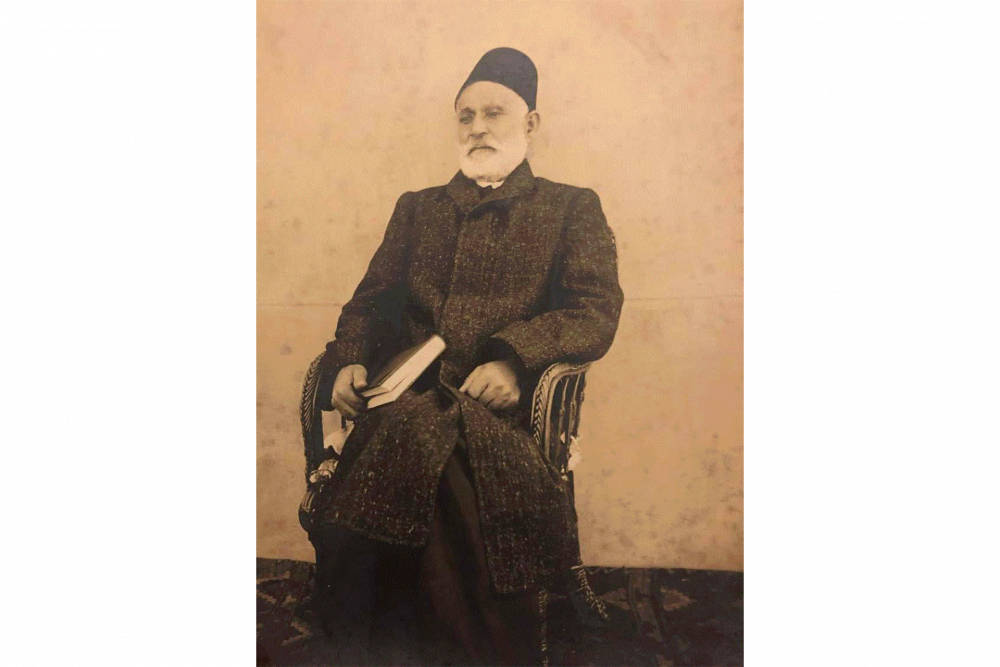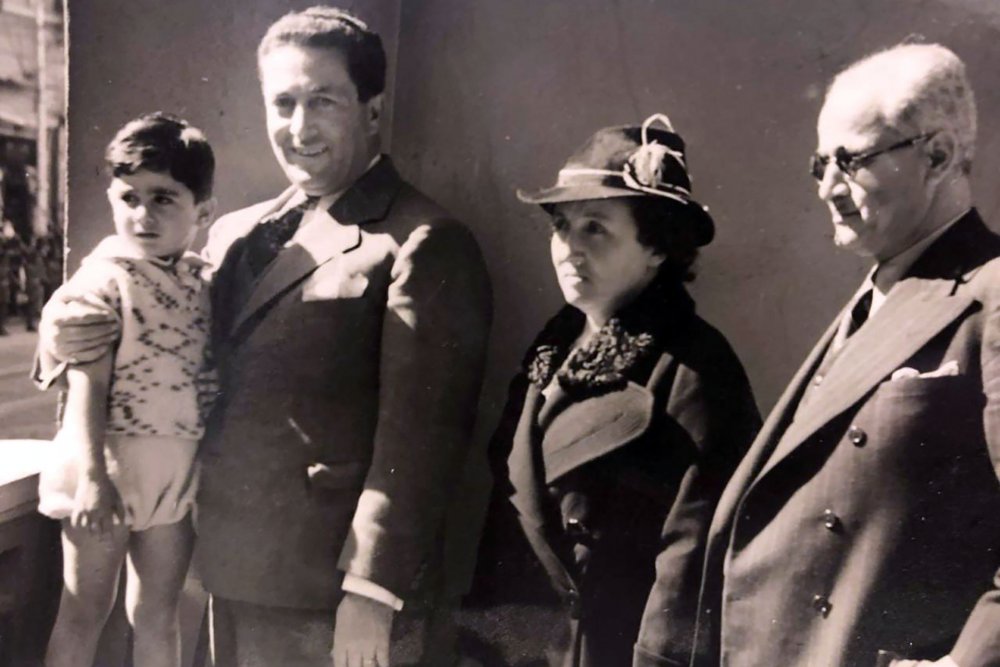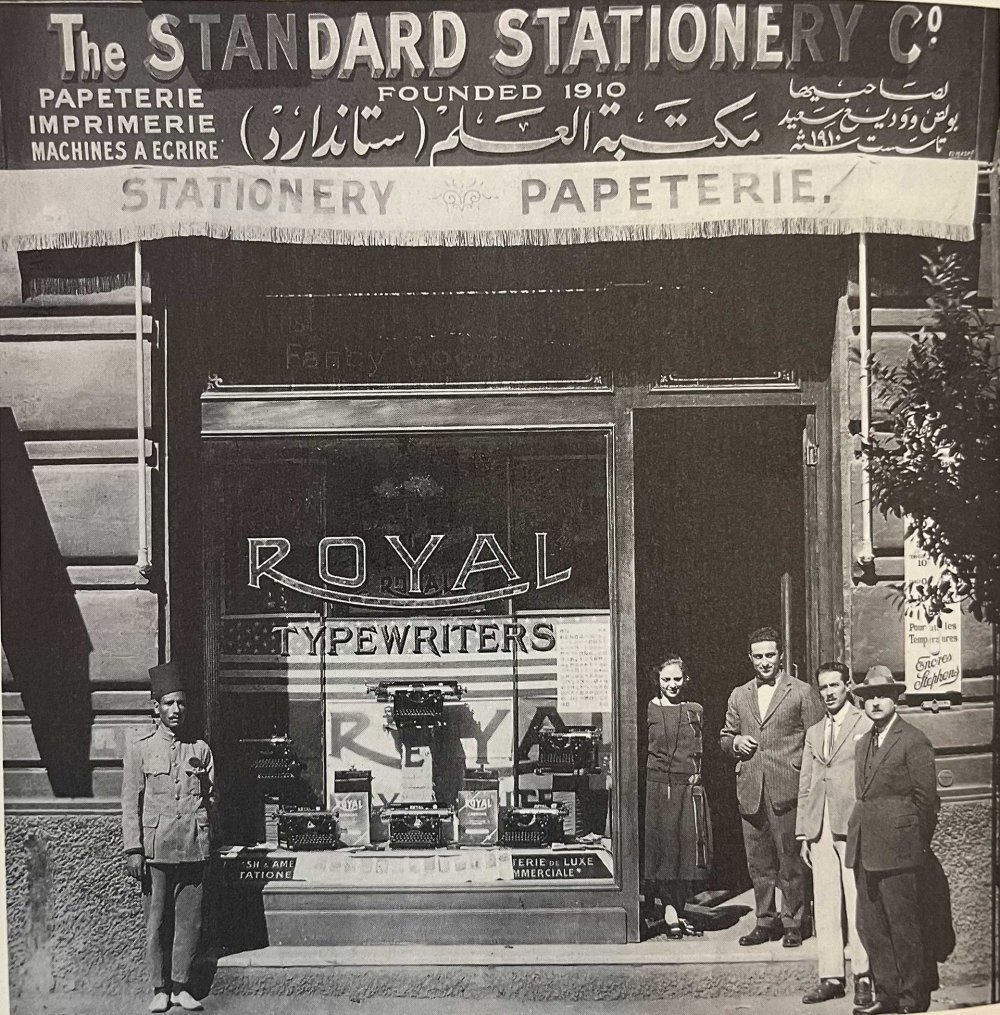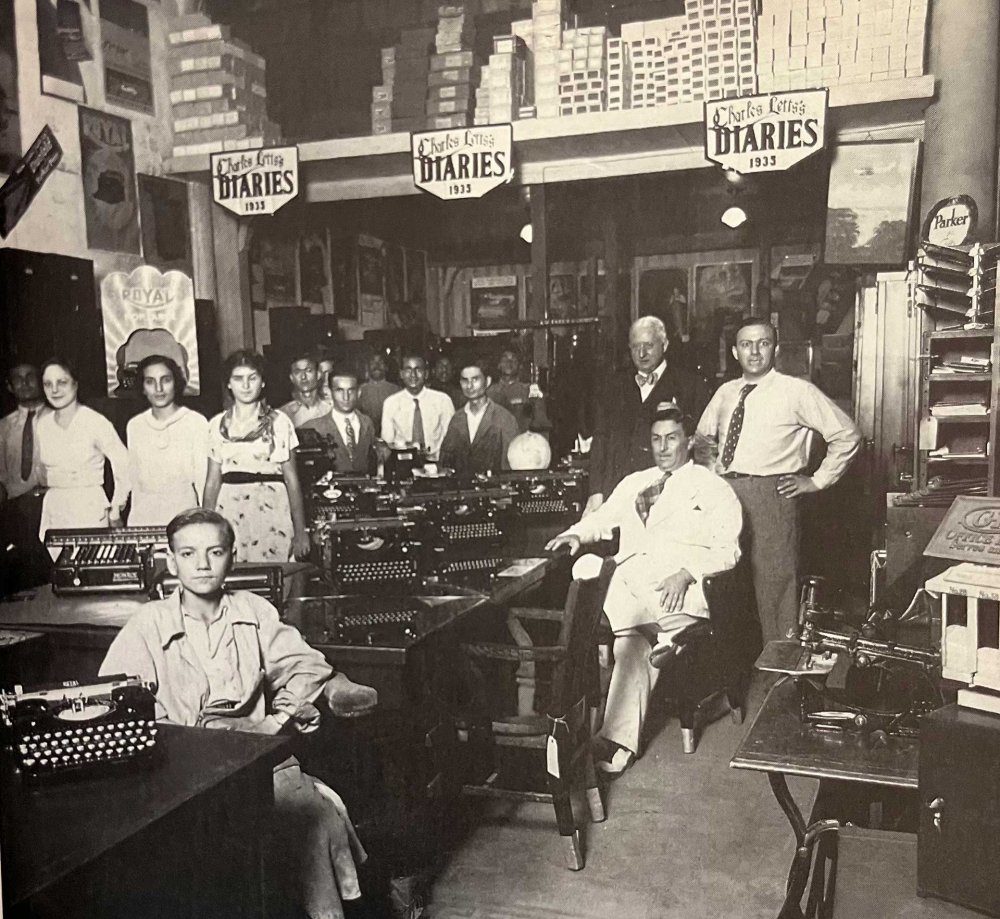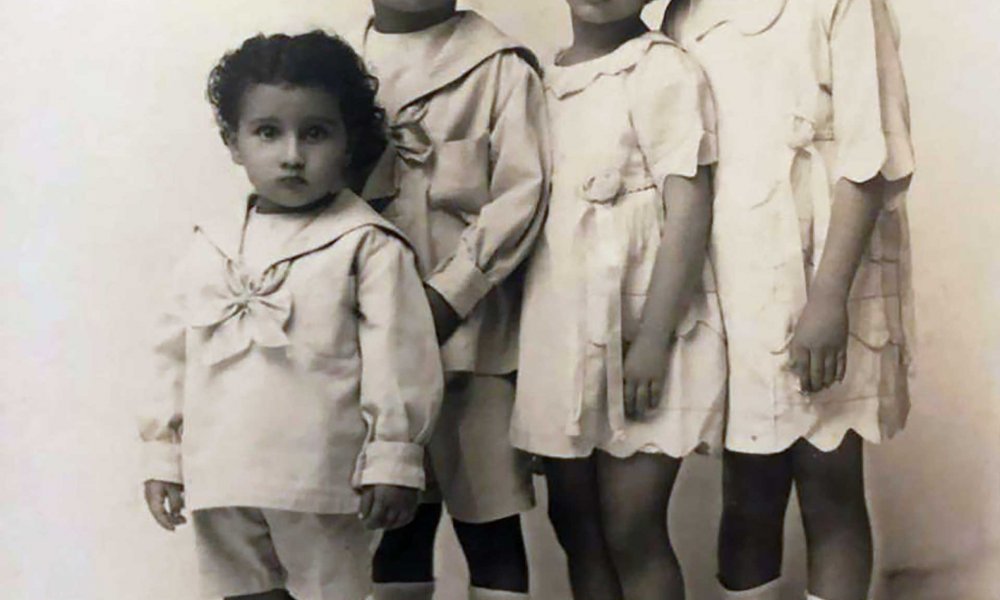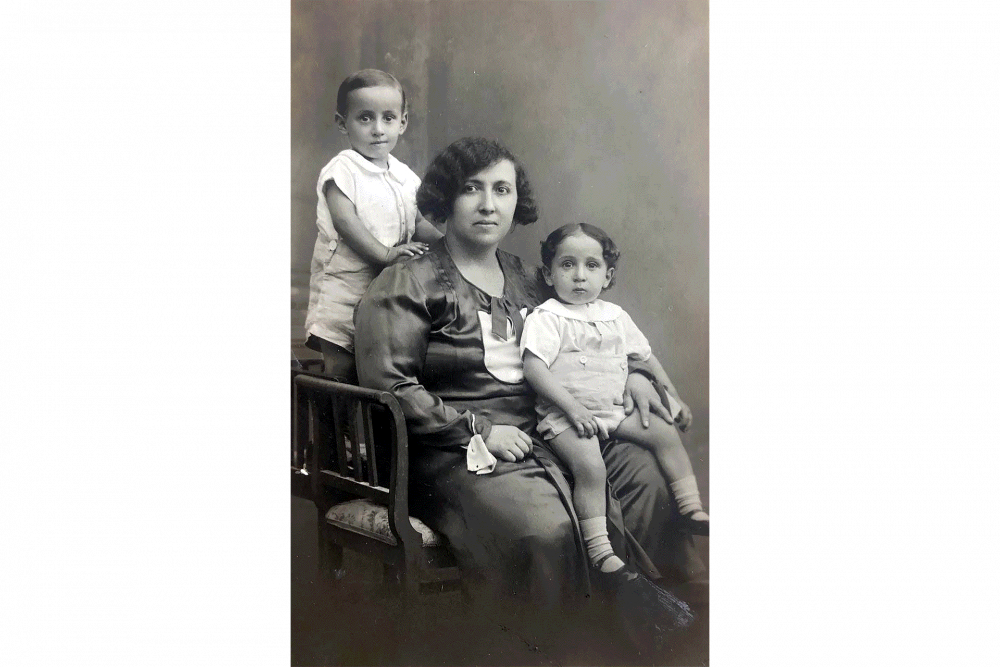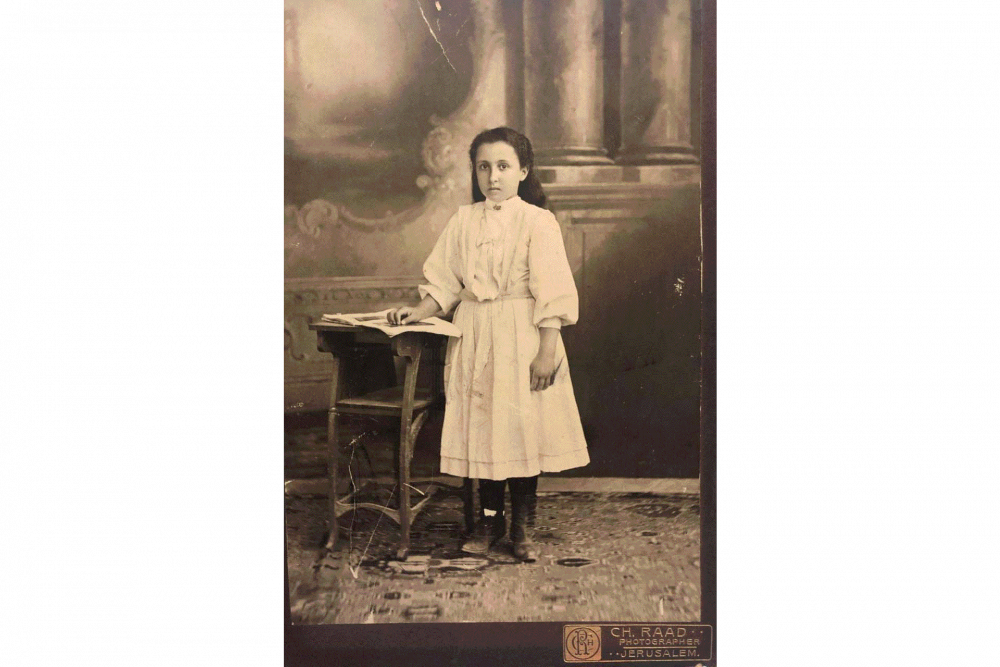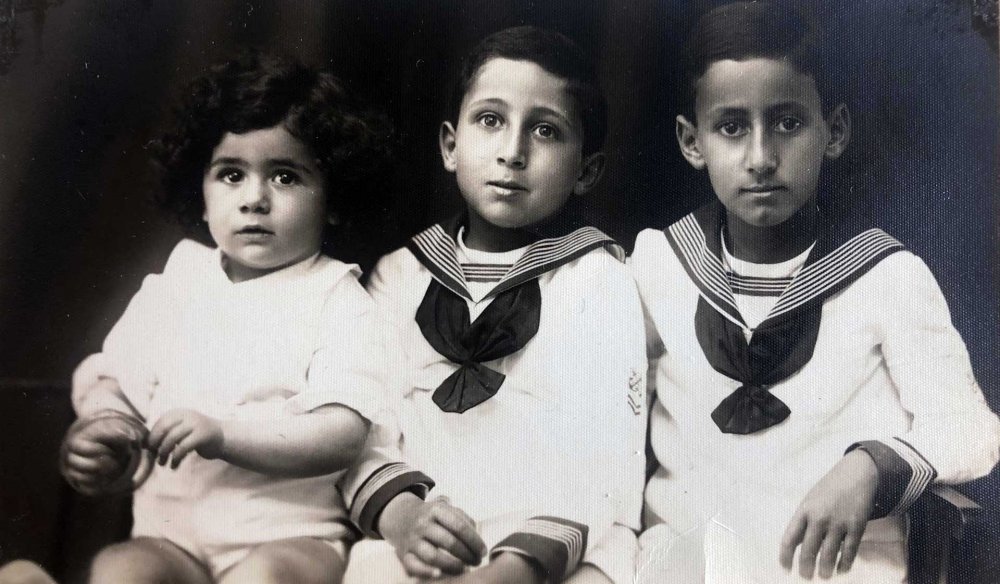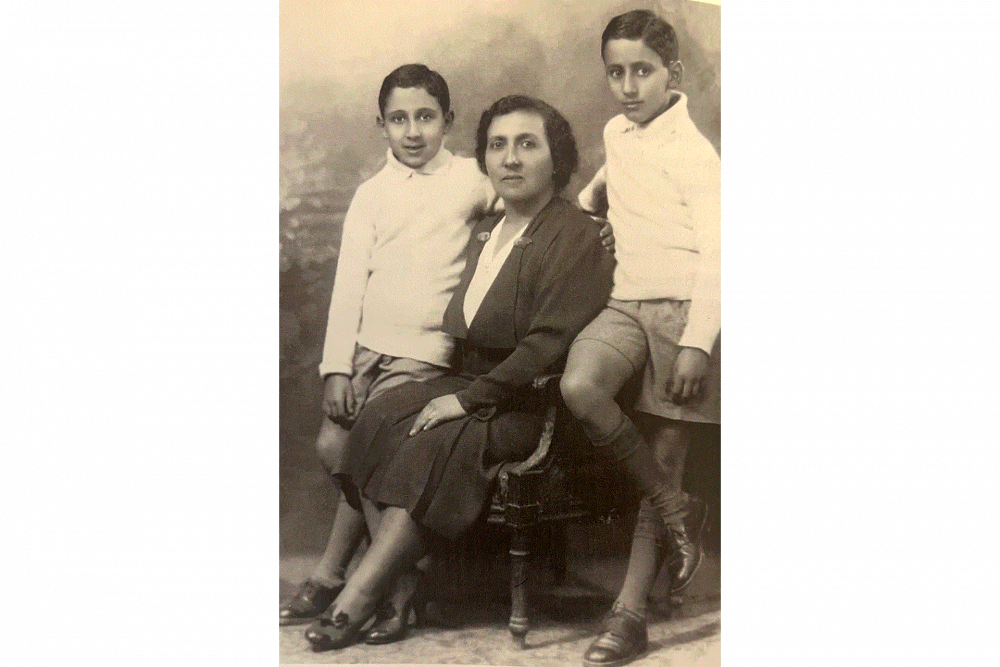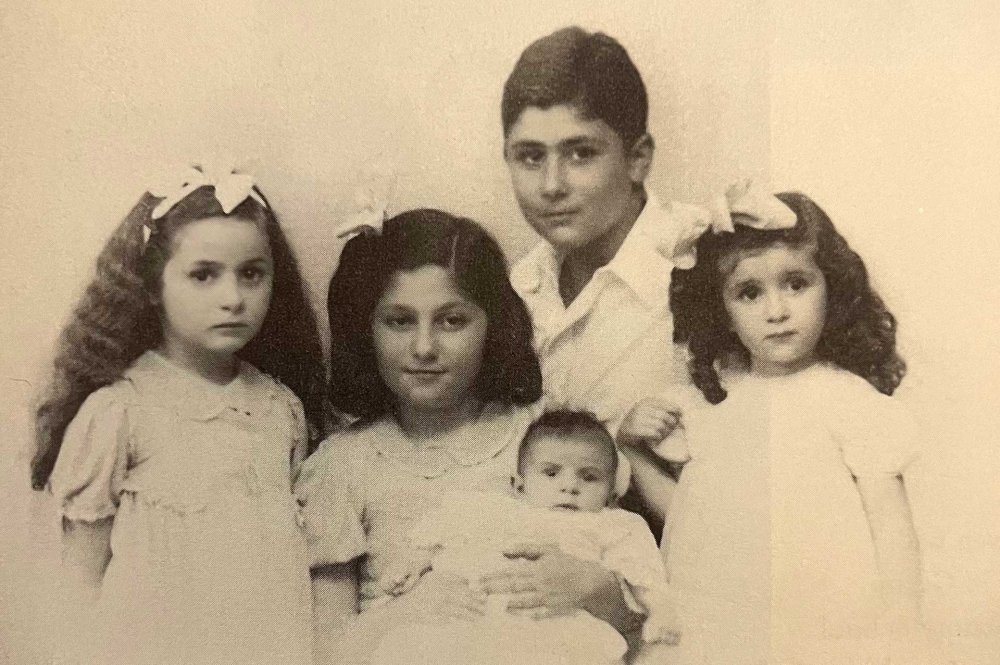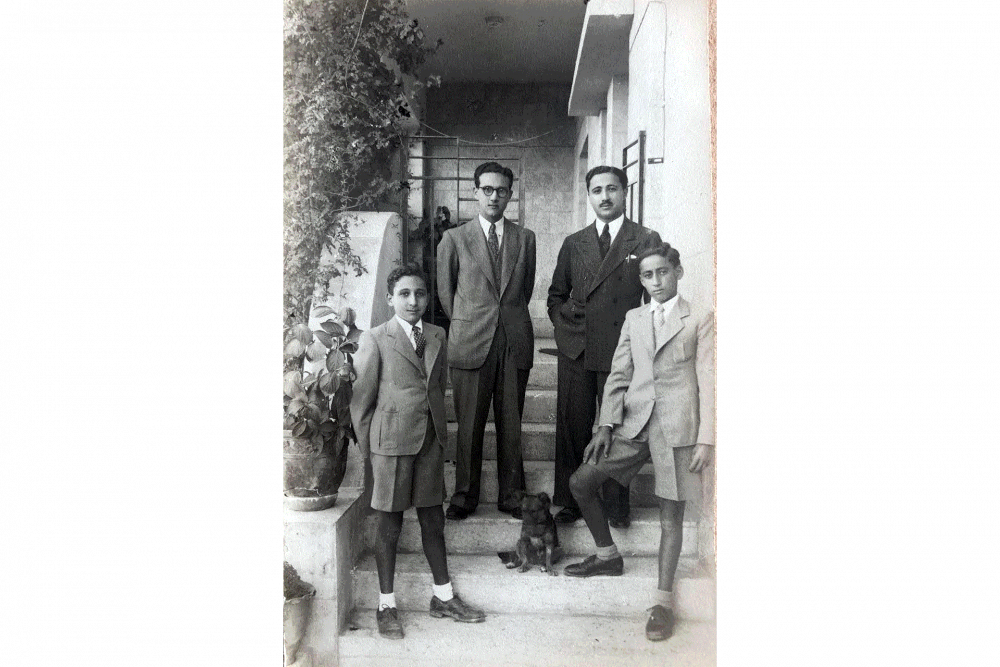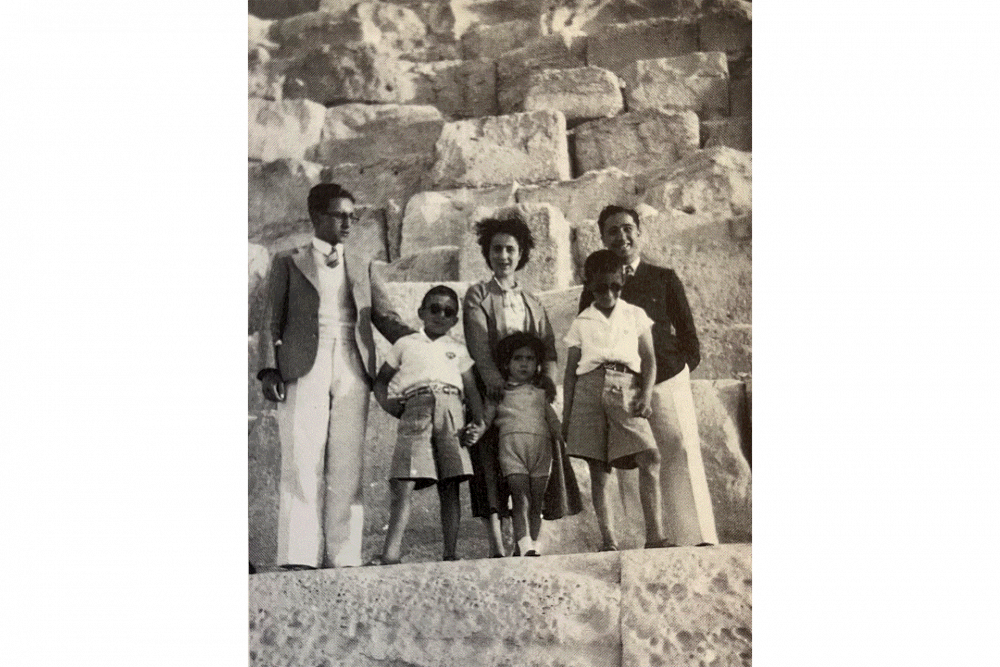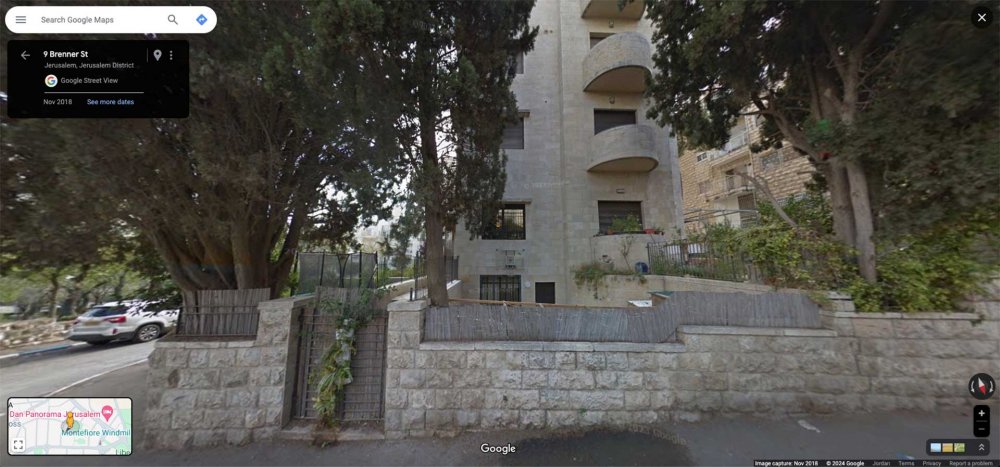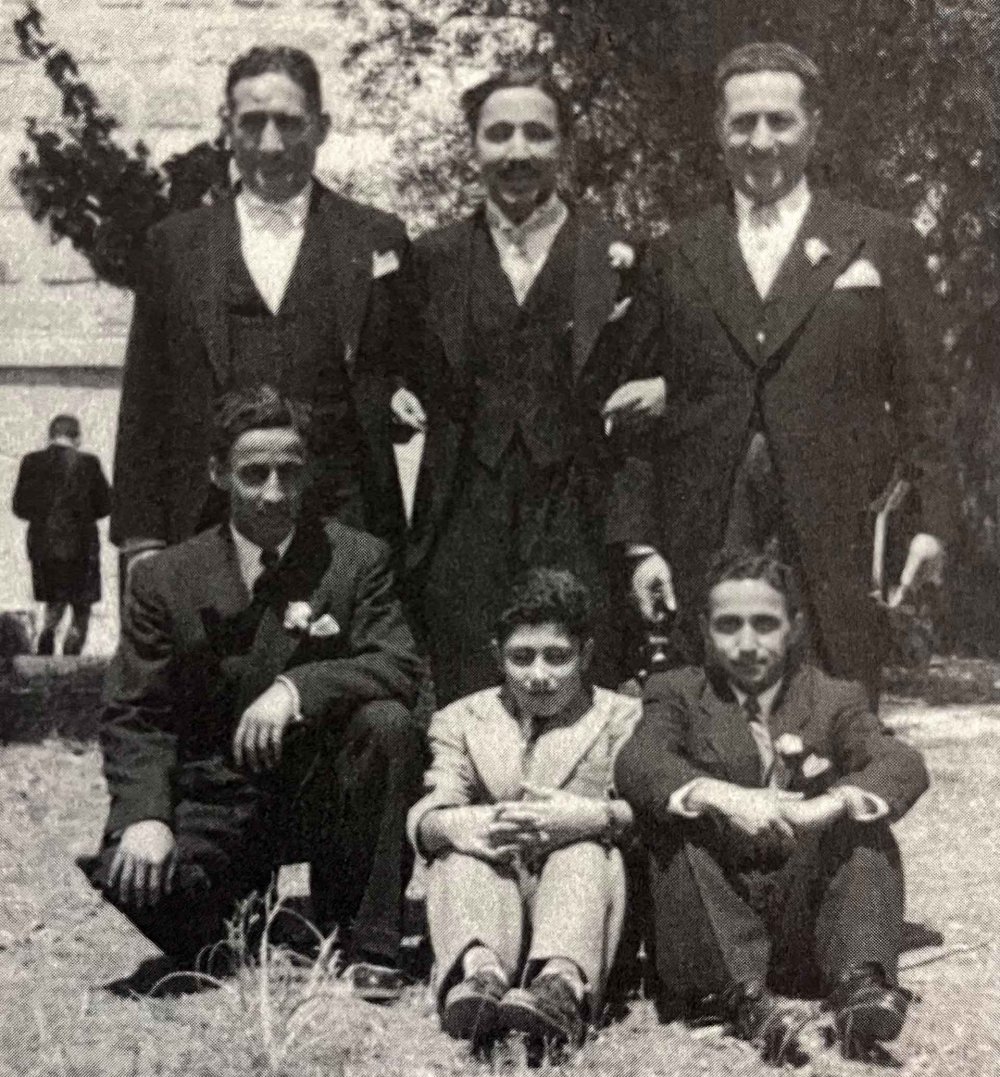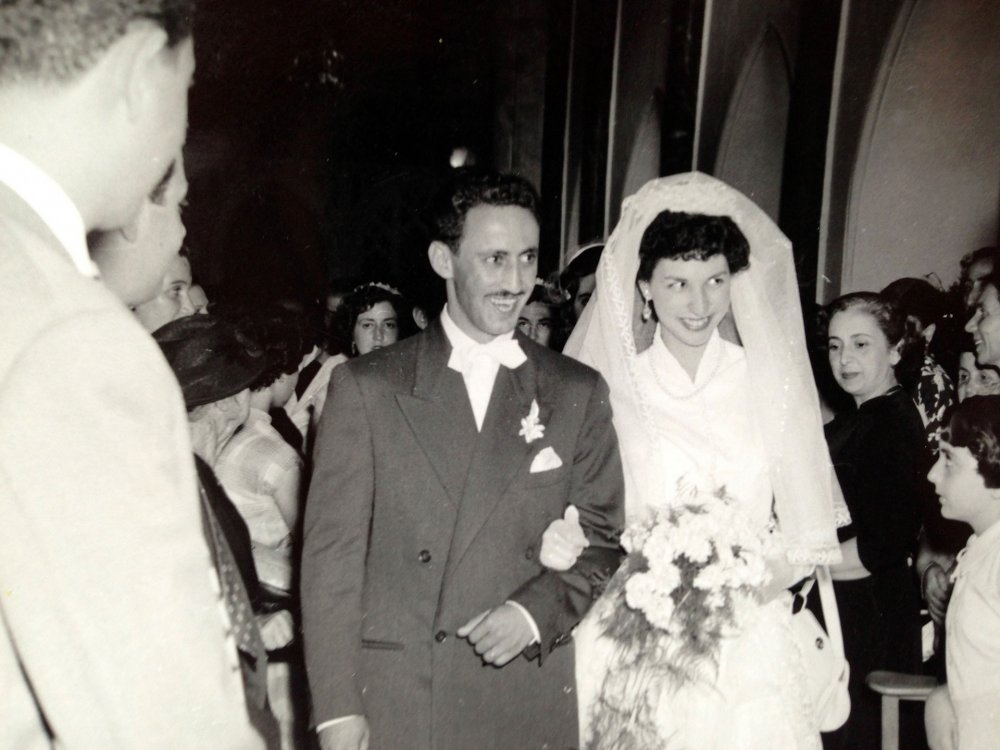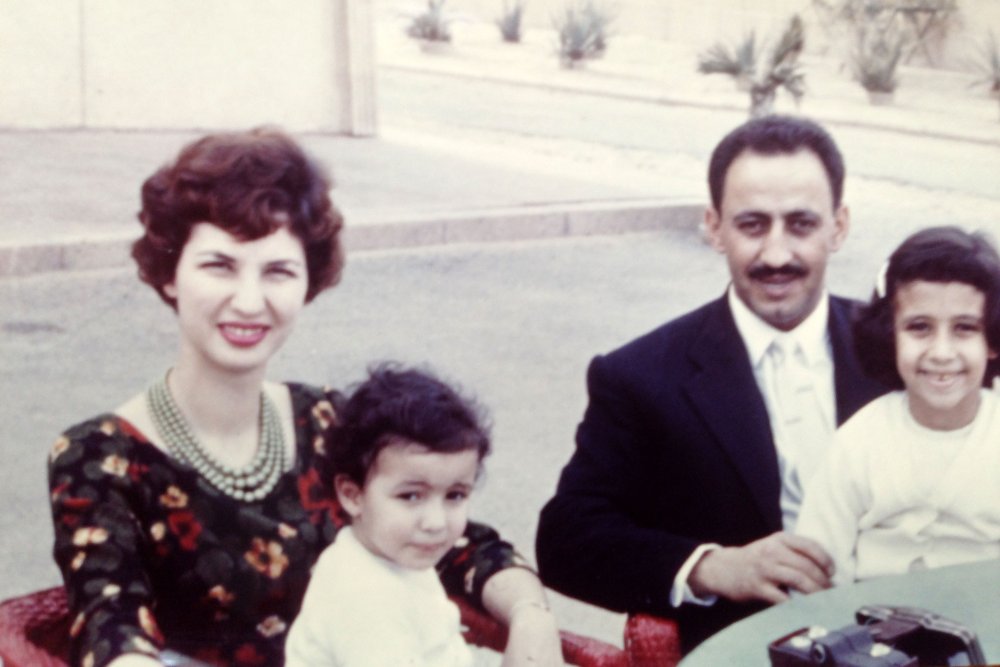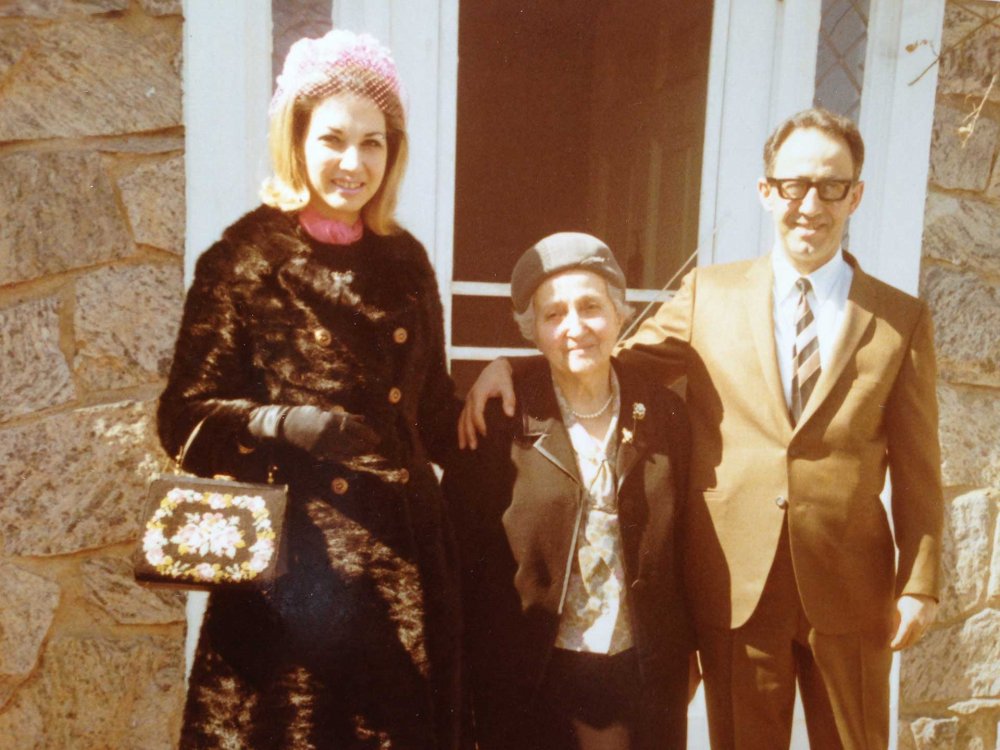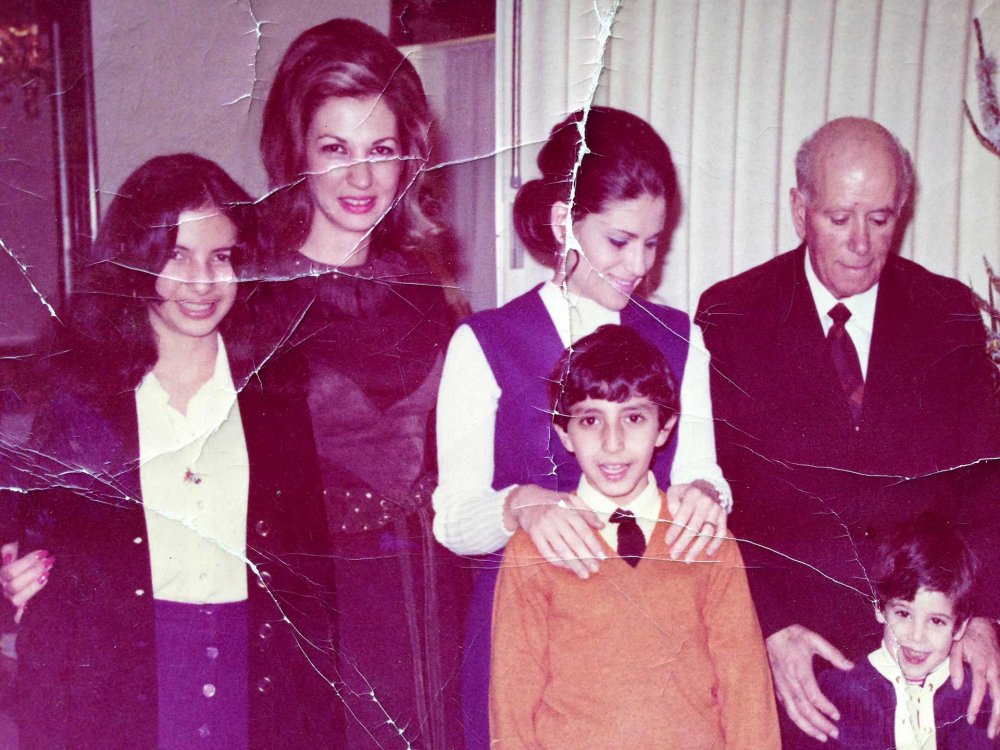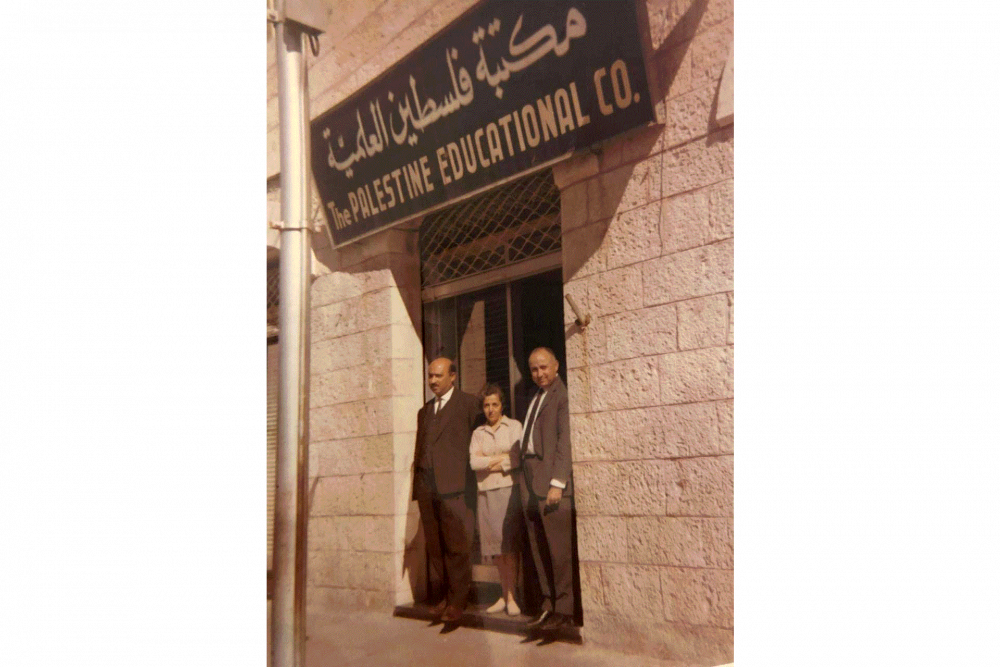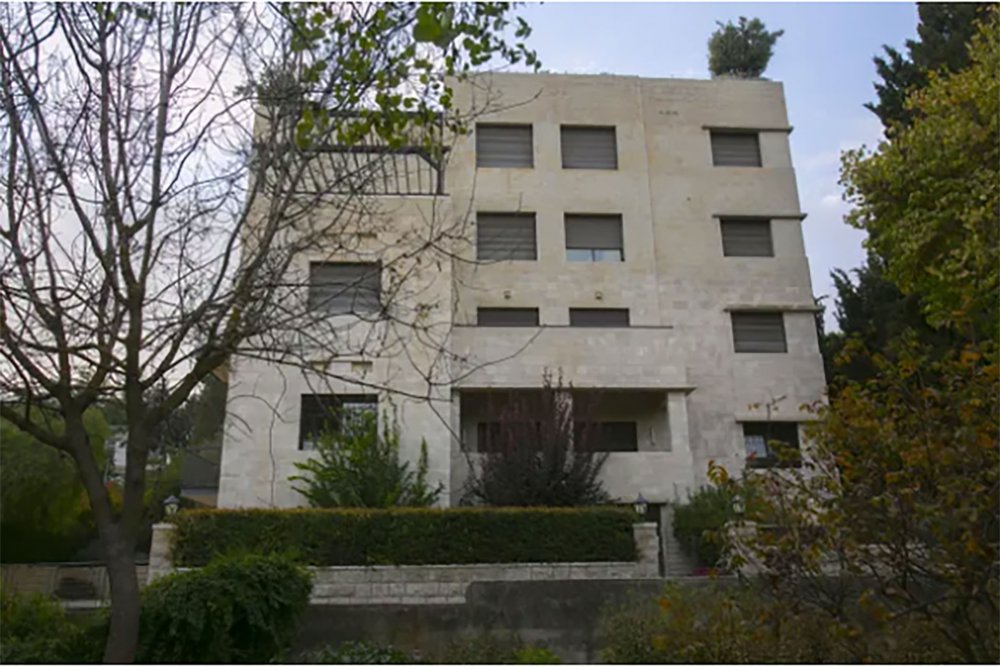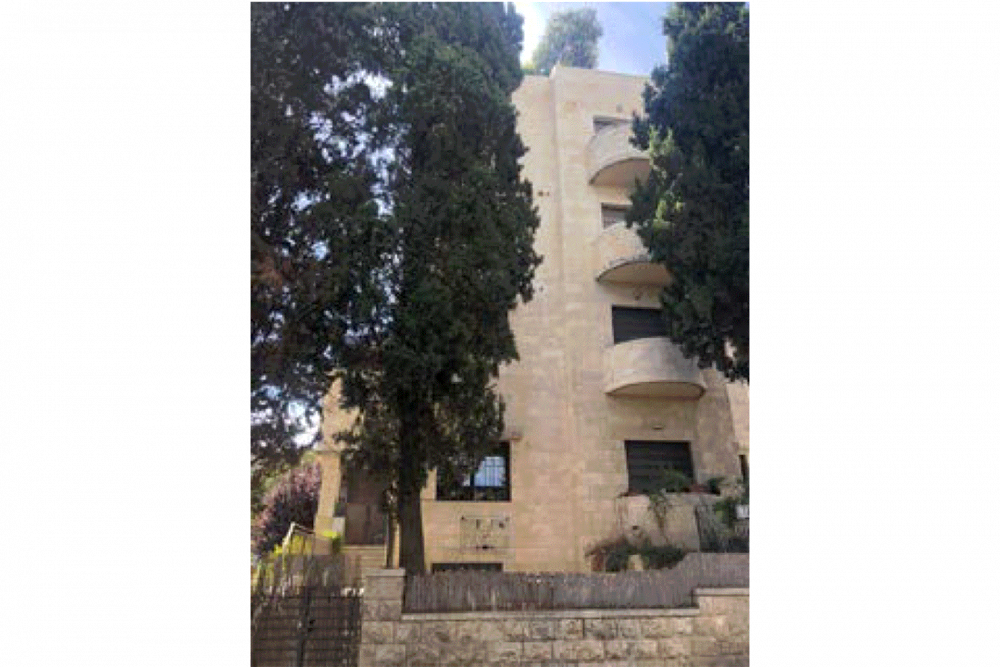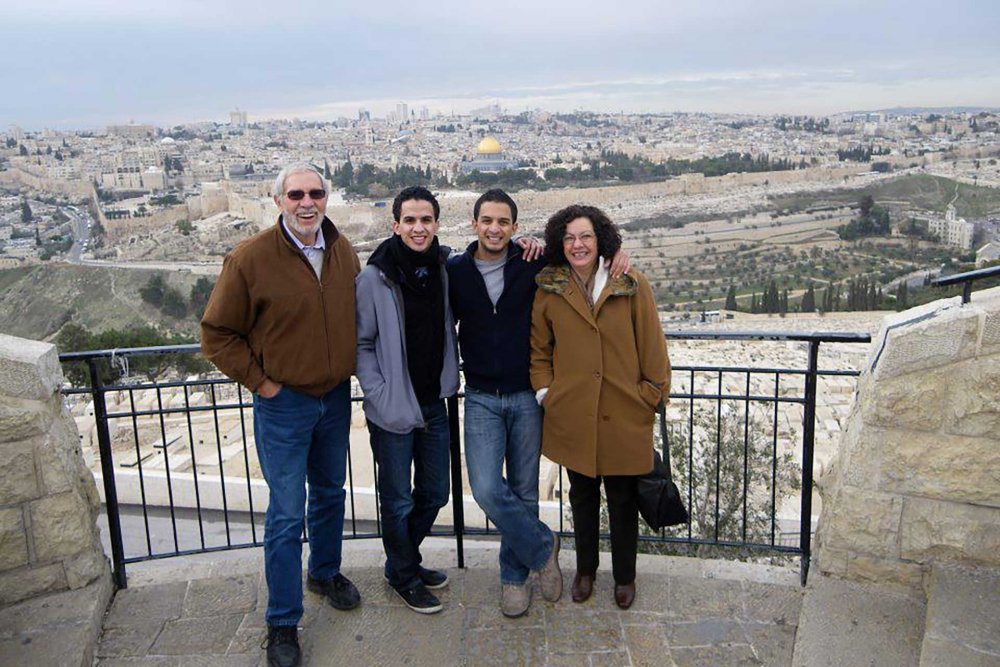Before their flight from Jerusalem in the months leading up to May 1948, members of the Said family were part of the city’s Christian aristocracy. Affluent, well-traveled, and educated in the city’s British institutions, this Protestant Anglican family originally hailed from the large Khleif tribe of Nazareth. The story goes that one of their ancestors fought with his brothers and moved to Jerusalem in the mid-19th century, starting his own family line: the Saids. Prior to the Nakba, the family’s most renowned members, cousins, and businessmen, Wadie and Boulos Said, were born in the Old City around the turn of the 20th century. The two went into business together, and their relationship grew even closer when Boulos married Wadie’s sister Nabiha. The descendants of Wadie and his wife, Hilda, would come to include writers, intellectuals, and academics, most notable among them Edward Said. Their less famous cousins, Boulos and Nabiha’s children, would preserve the family business first established in Jerusalem into the 21st century.1
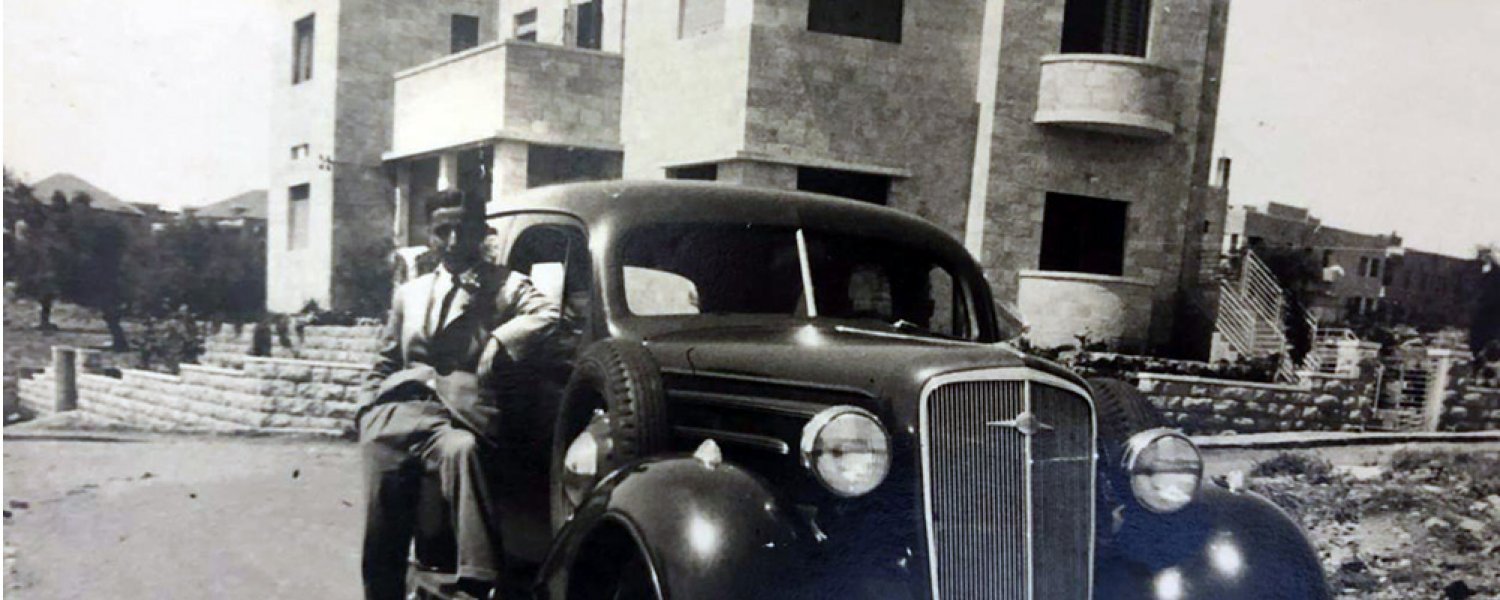
Credit:
Said family collection
The Said Family of Jerusalem: Denied Return to Their Home in Talbiyya, Perpetual Trauma in Exile
Snapshot
The Said family fled their home in Talbiyya in the months leading up to May 1948 and sought refuge in Cairo, where they had opened a branch of their family business years prior. But their lives in Egypt were also interrupted by the 1952 revolution, which sent them back to Ramallah, then to Amman, Beirut, the United States, and beyond throughout the Palestinian diaspora. While Edward Said is undoubtedly the most famous Said, this Photo Essay tells the story of his aunt and uncle’s family—who lived in the same house in Talbiyya—and whose descendants now live in Amman, Jordan.
By 1910, Wadie and Boulos had opened the family business, the Palestine Educational Company, in the New City and had made a sizeable profit selling not only educational supplies imported from Europe like books and stationery, but the latest European office technologies, including calculators, typewriters, and other office machines. The company was headquartered in Jerusalem, with branches in Jaffa and Haifa and an import warehouse in the Port of Haifa by the 1930s.
Among the city’s tiny Anglican minority, the Saids contributed to religious charities, helped subsidize the spread of Anglicanism in Palestine, and became deacons of the Anglican Church. They helped build schools, contributed to academic curricula, and donated funds to build the first Anglican school for the deaf and mute in the Middle East. They also imported from England the school textbooks, stationery, and other supplies that were used in these schools. In turn, the Saids benefitted from the influential Protestant mission’s efforts in Palestine: all male members of the family were educated in the prestigious Anglican diocese’s school in Jerusalem, St. George’s School, located in the Sheikh Jarrah neighborhood just north of the Old City.
As Anglicans, the Saids were among the few families who welcomed the British arrival to Palestine in 1917. But like all Palestinians, they were alarmed by the British promise to the Zionists of establishing a Jewish national home in Palestine.
Seeing in Palestine the seeds of conflict, Wadie decided to open a branch of the family company in Cairo in the 1920s. He took over the new branch in Cairo, expanded its product base by importing new machinery from the US, and renamed it Standard Stationery. As the Egyptian economy grew in the early 20th century, so did Standard Stationery, with many branches established across Egypt. This is why, in mid-April 1948, after Boulos had already passed away, Nabiha and her five children fled their home in Talbiyya, Jerusalem, and went to Cairo where Wadie and his wife, Hilda, had relocated their family of five children several years earlier.
The Said family home is located today at 10 Brenner Street, just down the road from the prime minister’s house, along Chille Square, a park in the Talbiyya neighborhood of what is now West Jerusalem.2 But when Wadie and Boulos purchased the lot in the late 1920s, the land surrounding it was largely empty, and its prospects for development seemed limitless. They decided to build a two-story family home large enough to accommodate their families, which included 13 children. Boulos and Nabiha had twins Evelyn and Yousef, George, twins Adib and Labib (who died in infancy), Margaret (who died as a teenager), and twins Albert and Robert. Wadie and Hilda had Edward, Jean, Rosemary (Rosy), Joyce, and Grace. The cousins grew up in Jerusalem within the walls of their modern home built with the majestic Jerusalem stone. Though their school was on the other side of the Old City, their favorite place to meet and play with their friends, the YMCA, was less than a 10-minute walk from their new home in the flourishing New City.
Israel confiscated the Said house in May 1948. The Saids had fled Jerusalem earlier that April, but all their belongings were still in the house. The house and its contents remained in the possession of the so-called Custodian of Absentee Property until the early 1980s, when Menachem Begin gave it to the International Christian Embassy, a right-wing evangelical organization established in 1980 to support the Zionist state. In the 1990s, when the organization relocated, Amidar, an Israeli state-owned housing company established in 1949, was granted the property. In the early 2000s, a private real estate company, Talbeia Properties, purchased the property from Amidar, and shortly thereafter in 2005, Jewish-American financiers and brothers Arthur and Michael Fried bought it from Talbeia Properties along with 90 percent of Talbeia Properties. Wasting no time, the Fried brothers hired an architect to add two more floors to the edifice, transforming the two-story Said family home into a four-story condominium apartment building to be managed as short-term family vacation rentals.3
Like thousands of Palestinians’ properties in Jerusalem (see The West Side Story, Part 4: The Erasure of the New City and Its Transformation into Jewish West Jerusalem), the Israeli state and its associated bodies confiscated the Saids’ dream family home (see The Sakakini House: Tracing Israel’s Bureaucracy of Collective Confiscation through One Treasured Home) in Talbiyya, casting them into exile, where they remain to this day. Not a single Said remains in Jerusalem today; their descendants are now scattered across the Palestinian diaspora, including in Jordan, Lebanon, Switzerland, the UK, Canada, and the US. The majority are located in Amman and Beirut.
Wadie and Hilda Said’s children Edward and Jean have written memoirs describing their childhoods and experiences in Jerusalem and in exile,4 but the story of Nabiha and Boulos’s family remains untold. Jerusalem Story sat down with Nabiha and Boulos’s granddaughter, Dina, and great-grandson, Najib, in Amman to find out what happened to that side of the family after they left Jerusalem in 1948.
“Not being able to go back to our home in Talbiyya was something my father was never able to accept and part of why he died so young at 51 of heart failure,” Dina, 65, Albert’s daughter with Sylvia Salah from Ramallah, shared. Dina and her two siblings, Basim and Hala, were born in Cairo a few years after the Nakba.
Jordan annexed East Jerusalem between 1948 and 1967, and so it was possible for the Saids to periodically return to the West Bank for visits while they lived in Cairo.
On one of these visits, Boulos and Nabiha’s son Albert met and married Sylvia Salah, the daughter of Hannah Salah, an engineer from Ramallah, and Lamia Nasser, an English teacher from Birzeit. The couple married in St. George’s Cathedral in East Jerusalem in 1953, returned to Cairo, and gave birth to Hala in 1955, Dina in 1958, and Basim in 1960.
But the children were born into a tumultuous Egypt, with Gamal Abdel Nasser’s 1952 military coup toppling the monarchy and installing a socialist republic with him as president. As part of his widespread reforms, Nasser nationalized the economy and seized the assets of foreign nationals, including the Said family’s substantial businesses, factories, and workshops. By 1962, and after spending six months under military house arrest in their Zamalek apartment, Albert and Sylvia finally managed to leave Egypt with their three children. Homeless again, they returned to Ramallah to stay with Sylvia’s mother.
“In Ramallah, we got to know who we really were; not just Palestinians, but Jerusalemites,” Dina explained. “We always knew, even as kids in Egypt, that we were Palestinians. We knew we spoke a different Arabic from people around us in Cairo, but we never understood what our parents and grandparents lost in 1948 until we went to Palestine and couldn’t visit our home.” Dina and her two siblings lived with their mother, Sylvia, at the home of their grandmother Lamia in Ramallah. They attended the Ramallah Friends School and got to know their extended families in Ramallah, Birzeit, and East Jerusalem.
With everything lost in Egypt, and with the Said family businesses in Jerusalem, Jaffa, and Haifa confiscated by Israel, Albert opened the Palestine Educational Company in East Jerusalem on Salah al-Din Street, as well as a branch in Amman a year later. Dina explained:
Our dad was coming and going to Amman and Jerusalem a lot, reopening the family business after losing everything in Egypt, but each time he came back to see us in Ramallah, he would insist on taking us to East Jerusalem. We’d visit the Old City to see where he was born and pass by the family business to pick up books and pens for school. But he would also take us to the YMCA on Nablus Road because, from its rooftop, we could actually see Talbiyya. But that’s the closest he ever got to going back home—2 kilometers. He died 15 years later singing “Green, Green Grass of Home” by Tom Jones.
Though Albert and his brothers had established new branches of the family business in Jerusalem and Amman in the early 1960s, they were no match for larger markets they once enjoyed in Jerusalem, Jaffa, Haifa, Cairo, and Alexandria. In 1964, Albert and Sylvia took their kids and moved to Beirut.
But three years later, the 1967 War broke out, and the Saids again lost their business in East Jerusalem; they were also barred from visiting their families in the West Bank due to Israel’s occupation.
Seeing little hope in the worsening situation in the region, Albert and Sylvia packed up their belongings once again and relocated their children to Long Island, New York, in 1968 in pursuit of a new business opportunity.
But life in the US was just as traumatic as the Middle East, as the Vietnam War raged and anti-Arab racism soared following the 1967 War. While Albert worked tirelessly, Sylvia and the kids were miserable. Two years later, in 1970, the family decided to return to Beirut and start all over again.
Back in Beirut, the family was desperate to plant roots. And just as this started to feel possible, the Lebanese Civil War broke out in 1975. Albert, Sylvia, and the three children survived not only being kidnapped, held at gunpoint, and sheltering in the basement of their building during bombardments, but an actual rocket that exploded in their kitchen and living room while they slept in their bedrooms. “We loved Beirut, though,” Dina said, echoing what many in the region continue to say about the devastated city, “but mostly, there was nowhere else for us to go. We couldn’t go back to Ramallah and Jerusalem anymore, so we stayed under the missiles.”
Albert died in 1980 while undergoing open heart surgery in London. Dina, 21, and just finishing university in the UK, went to Jordan to live with her uncle Robert, Albert’s twin, and his family. Robert and his wife Rima had met and married in Amman in 1967; they had two children shortly thereafter. In Amman, Robert managed the local branch of the family company, which he named Jordan Educational Company. By then, the company was not only selling school and office supplies, but furniture and household appliances as well. Today, the company is known as OFFTEC Holding Group, and though still headquartered in Amman, it has branches in Ramallah, Iraq, and Sudan, selling office, banking, computer, and security systems throughout the Middle East. Dina’s brother Basim runs the company.
“With my father dead in London and buried in Amman, my mother was shocked and insisted on going back to Beirut,” Dina explained. “It was the only place that felt like home for her, but I was a fresh college graduate and there were no work opportunities in Lebanon during the war. That’s why I went to Amman to live with my uncle.” Dina’s older sister Hala had already married and moved to the US, while her younger brother Basim stayed in Beirut with their mother to finish university.
Basim and Sylvia spent five more years in Beirut until it was simply unlivable due to the continued civil war as well as the Israeli invasion of Lebanon in 1982. “An American patriot missile landed near our home, forcing my mother and Basim to spend four hungry, thirsty, sleepless nights in the underground garage of the building,” Dina explained. “Then, Basim got beaten up so badly by armed factions over a parking spot near his university, he was hospitalized for days. After that, he and my mother gave up and moved to Amman in 1984.” By then, Dina was married and living with her two children in Amman.
Though each of Boulos’s sons and their descendants secured Western nationalities—either Swiss, Canadian, or American—and could therefore visit Jerusalem as tourists of those countries, none of them was ever able to enter their home in Talbiyya again. But they have each stood outside it, that home their grandparents and great-grandparents built for them nearly a century ago, and Basim’s son Najib, 35, a British citizen, even met the Jewish Israeli-American family from Brooklyn that now inhabits his family home. “He told me he bought it fair and square from the Israeli state,” Najib explained about his conversation with the occupier of his grandfather’s home in 2016. “And when I didn’t argue and instead asked if I could enter to see where my grandfather grew up, he refused and said: ‘Don’t worry, we’re taking care of the house now.’”
When Dina, as a US citizen, went to see her father’s home in December 2011, she looked at the limestone wall her father had climbed when he was a child, the only part of the redesigned building that still retained her grandfather and grandmother’s original imprint. “I felt I wasn’t allowed to be there; I felt I wasn’t allowed to touch the stone, sit on it, or enter the building. I felt the Israelis were watching and would detain me for trespassing,” Dina shared. “All I could do was kneel down on the sidewalk across from the house, under the pine trees where my father and his siblings and cousins played. I cried a long lament of a mourning that my father was never allowed to have.”
That was the last time Dina returned to Jerusalem. “I bid farewell to my father and Jerusalem that day. So long as they’re still there, still in our home, I can never go back, not even to visit. It’s too painful.”
Notes
Unless otherwise referenced, all information about the Said family in this essay is based on interviews with two members of the family, Dina and Najib Said, conducted in Amman in June 2024.
For more on the history of the house, see Nadim Bawalsa, “Teta Nabiha’s,” Jerusalem Quarterly 84 (2020).
For more on the changes made to the house and the legal battle that ensued, see Nimrod Bousso, “American Owners of Luxury Jerusalem Property Benefit from Ties to Natanyahu Bureau,” Haaretz, November 14, 2013.
See Edward Said, Out of Place (New York: Alfred A. Knopf, 1999); Jean Said Makdisi, Teta, Mother, and Me: An Arab Woman’s Memoir (London: Saqi Books, 2004).

